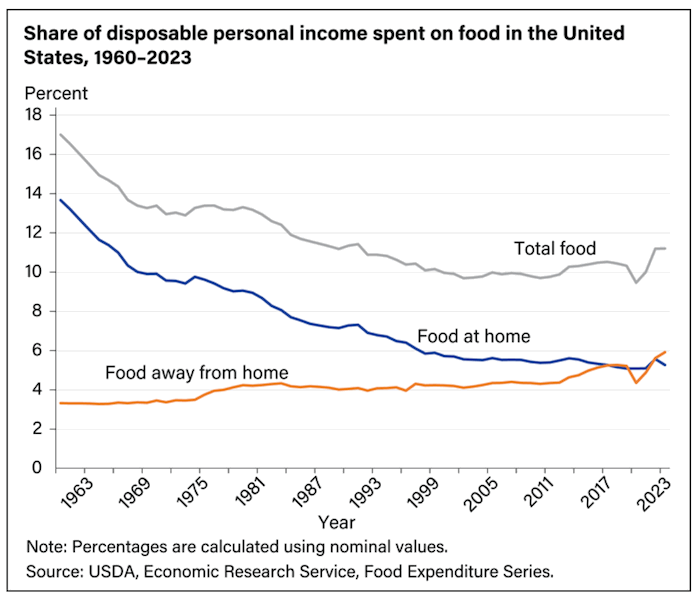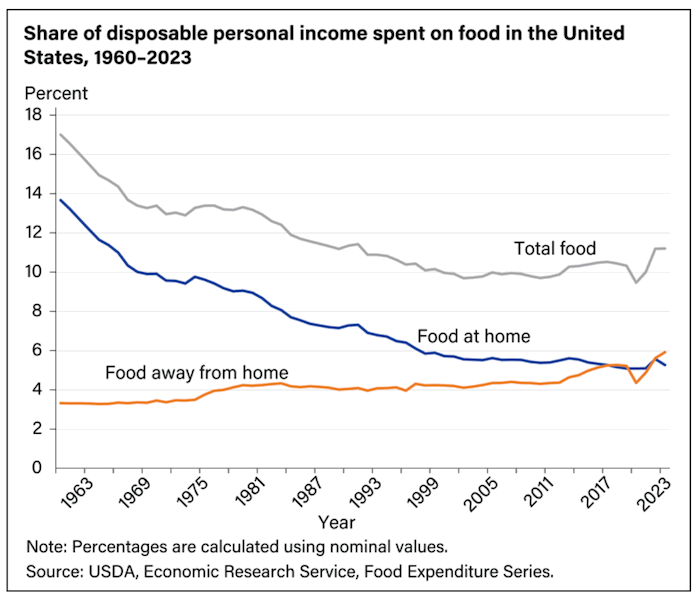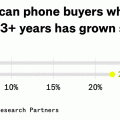Like everyone else, we’ve been hit with inflation both at the grocery store and while dining out. Eating at a sit-down restaurant with our family of five has been a $100+ affair for a while now (gotta tip 20% with the chaos that we bring!), but nowadays even fast casual meals are inching towards the $100 mark. This had led us to cook at home as much as we can, schedule permitting. It’s been probably a year since we’ve used Uber Eats or DoorDash.
So I’m actually a bit surprised by the chart above that says that Americans (again) spend more of their food budget dining out than at the grocery store. I know that we were there already before COVID hit, but I figured that the inflation spike would have kept a damper on things. Image credit to Sherwood News. Data is from the USDA Economic Research Service (ERS) which separates Food-Away-From-Home (FAFH) and Food-At-Home (FHA).
- Food-Away-From-Home (FAFH) includes meals and snacks supplied by commercial food service establishments (like all restaurants, bars, and hotels) and by eating facilities in non-commercial institutions (like schools, offices, and hospitals).
- Food At Home (FAH) includes food bought at grocery stores, convenience stores, warehouse clubs and supercenters, mail order, and online orders delivered to home.
This means that all those rotisserie chickens, half-baked pizzas, taco kits, and salads that I buy at the grocery store and Costco are still considered food-at-home. Nowadays, 1/3rd of Whole Foods is prepared foods from sushi to rice bowls to salad bar.
Here’s the same data set looking all the way back to 1960 that includes total spending on food as a percentage of personal disposable income. (source).

The trend is clear: We love to dine out at restaurants, even if it costs more than food from the grocery store, and even if it starts to cut into the rest of our overall budget.
As usual, I’m the oddball. I’ve started watching meal prep videos on YouTube and hoping to get better at cooking multiple meals at once.



